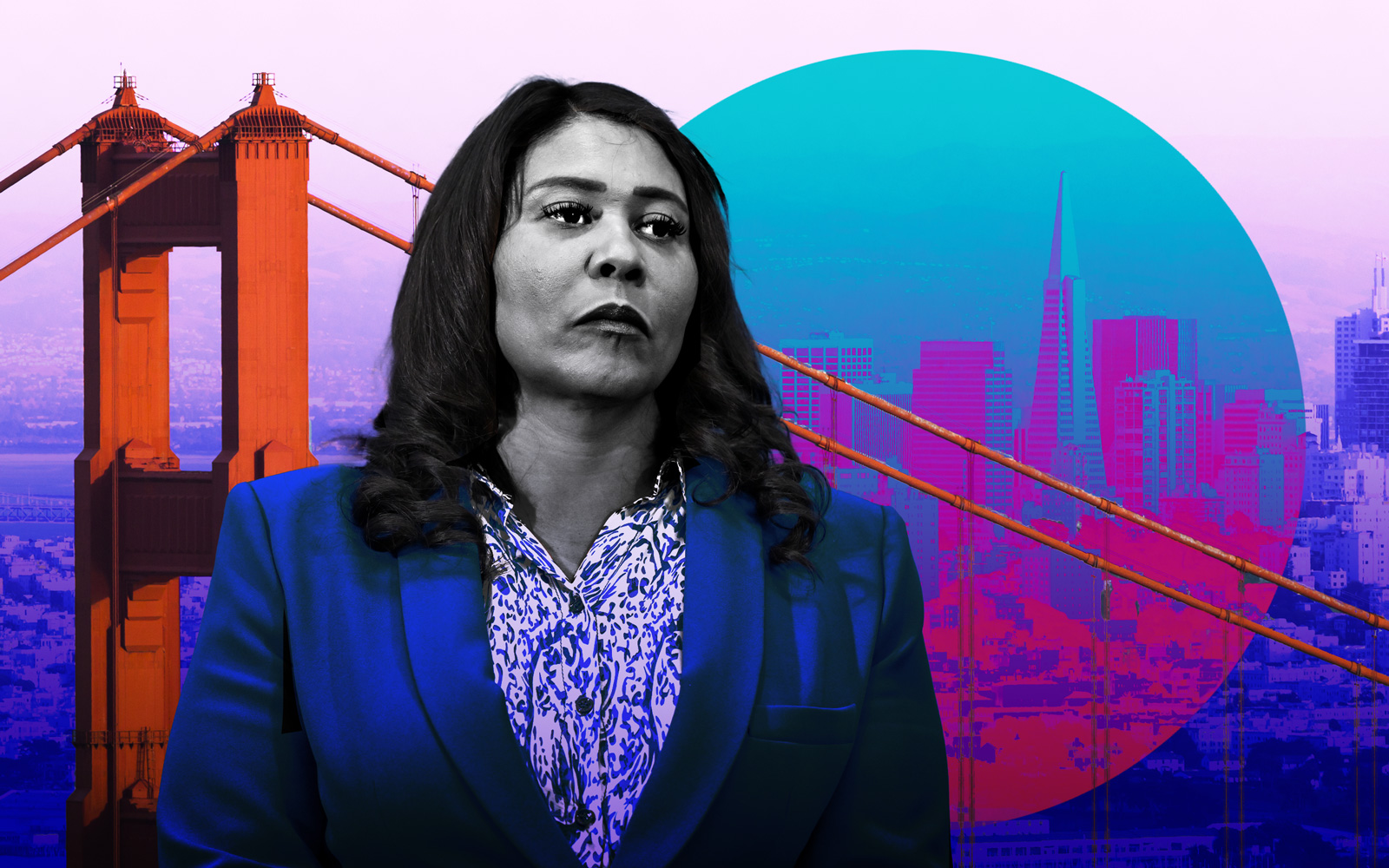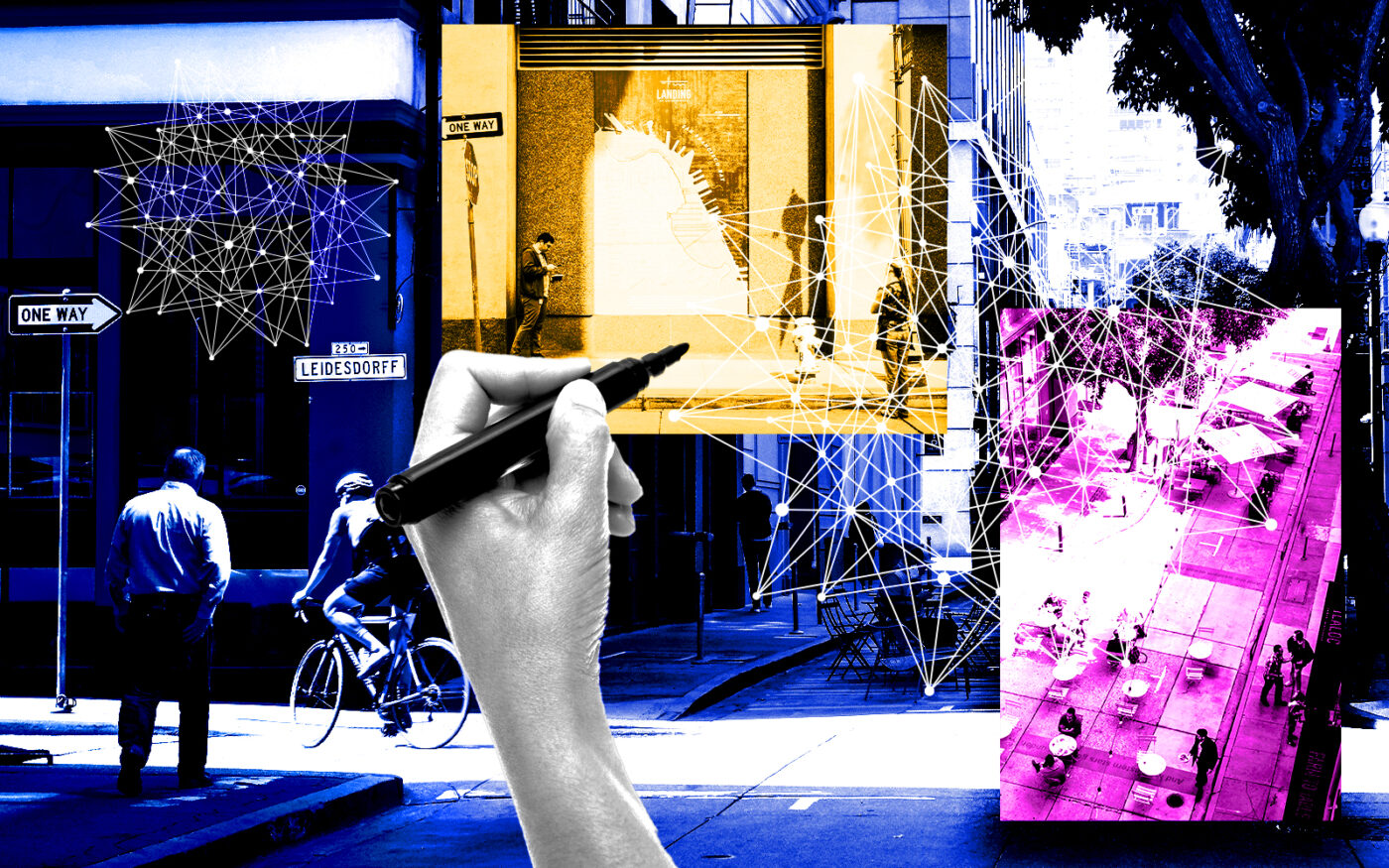A year after San Francisco went into one of the nation’s first and most prolonged pandemic lockdowns, there was already a narrative brewing about the death of downtown, a precursor to today’s “doom loop,” according to Robbie Silver, director of the Downtown SF Partnership, a community benefit district funded by the property owners in the Financial District and Jackson Square.
But the city, and particularly its downtown, aren’t dead or doomed, he said. They just need reinvestment and a plan of action to make them attractive to people both during the work day and especially in the evenings, he explained.
In 2021, just as the national media began heralding San Francisco’s demise, the partnership began putting together its Public Realm Action Plan to turn the doom loop into what Silver dubbed a “boom loop,” where one project to revitalize the downtown could inspire another, and onwards.
Landing at Leidesdorff, which launched this week, is the plan’s pilot project, funded largely by nearly $400,000 from the city’s Office of Economic Workforce Development. A representative from the OEWD said the city was excited to be part of a project that could lead to a “virtuous circle” of spurring business just blocks from the Transamerica building, where SHVO is investing hundreds of millions in both the historic building and its public open space.
As part of the alleyway project, the partnership was able to close Commercial Street where it intersects Leidesdorff Street to car traffic for most of the day and evening; add several physical improvements, such as murals, planters and lighting; and plot out programming ranging from gym classes to live music.
“The great alley network of San Francisco is one of our best assets here but they are so underutilized,” Silver said.
The alleyways at Commercial and Leidesdorff were particularly compelling because they sit at the “crossroads” between the Financial District, Jackson Square, Chinatown and the Embarcadero Center, he said. It was once the city’s waterfront, built in part on top of the abandoned ships left behind by Gold Rush prospectors. The street is named for a fascinating early city leader, the half-Black, half-Jewish ship captain and merchant William Leidesdorff, born in St. Croix, who built the city’s first hotel in 1847 and died of typhoid one year later at just 38 years old. Arts nonprofit ACED SF provided the funds to have local muralists Twin Walls depict Leidesdorff’s life on a PG&E substation in the alley.
“There’s not a lot of places in SF where you can stand in an alley or backstreet and experience that mix of history and culture all at the same time,” Silver said.
Welcoming Financial District
Downtown SF Partnership Deputy Director Claude Imbault was born and raised in the city and said the reputation of the Financial District, even before the pandemic, was never about fun and games.
“The impression of downtown was buttoned up,” said Imbault, who led the creation of the Public Realm Action Plan in collaboration with SITELAB urban design and strategy firm. “It wasn’t welcoming to everyone.”
Imbault said the goal of the plan, which cost the Partnership $170,000 to put together and has a total of six projects around the Financial District on its ambitious agenda, is to pull both workers and casual visitors to the area through a mix of spruced up spaces and new programming.
“We were very clear in our initial conversations that this is not a revitalization, which is saying we’re simply going back to what was, but a reimagining of how we use our streets, sidewalks and public spaces. They need to be clean, safe and attractive, but also joyful and fun,” he said. “Cities are changing and they’re changing fast and this is the document to provide the framework for moving forward.”
Creating pedestrian-friendly places is one of the cornerstones of the plan. At Landing at Leidesdorff, it took months to get the necessary approvals to close the street to cars, except between 11 p.m. and 7 a.m., so that there could be “continuous activity” in the street, he said.
Some of that activity will come from local businesses, particularly restaurants and bars that already had a presence in the alleyway, according to SITELAB co-founder and Principal Laura Crescimano. In return, they will get more business from the pedestrian uptick in the outdoor space.
Tristen Philippart de Foy opened Heartwood, his third restaurant in the city, on the alleyway this spring. He heard about the Landing at Leidesdorff as he was entering his final negotiations with the owner of the building last year and it helped cement his decision to move forward, he said. He had been looking at locations around the Bay Area but already had one restaurant in the Financial District and said, given the “dearth” of other restaurants and bars and the favorable lease conditions worked out with his landlord, that the new business would be “well suited once the Financial District is back to full strength.”
He signed a 10-year lease and said he hoped to be in the location “much longer.”
Read more



“Economic proposition’
In a further symbiotic give-and-take, building owners and leasing agents in the area can utilize the new open air event space and growing food and beverage offerings to entice workers and other businesses to the area, which will then add more participants to those events, Crescimano said.
“There’s an economic proposition here,” she said. “The work is to stand something up so that eventually it creates its own momentum.”
Now that Leidesdorff is up and running, SITELAB has its sights set on the next project in the partnership’s action plan: a “Gateway” where the California Street Cable Car dead-ends at Davis Street. The installation there will seek to welcome tourists and locals getting off BART or heading downtown from the Ferry Building and “launch” them into the Financial District, she said.
“It has a pocket of space, similar to Leidesdorff. Some people could call it left-over, or you could see it as an opportunity space,” she said. “There have been multiple parties showing interest in coming together for that.”
